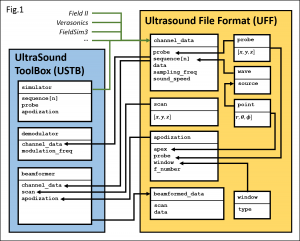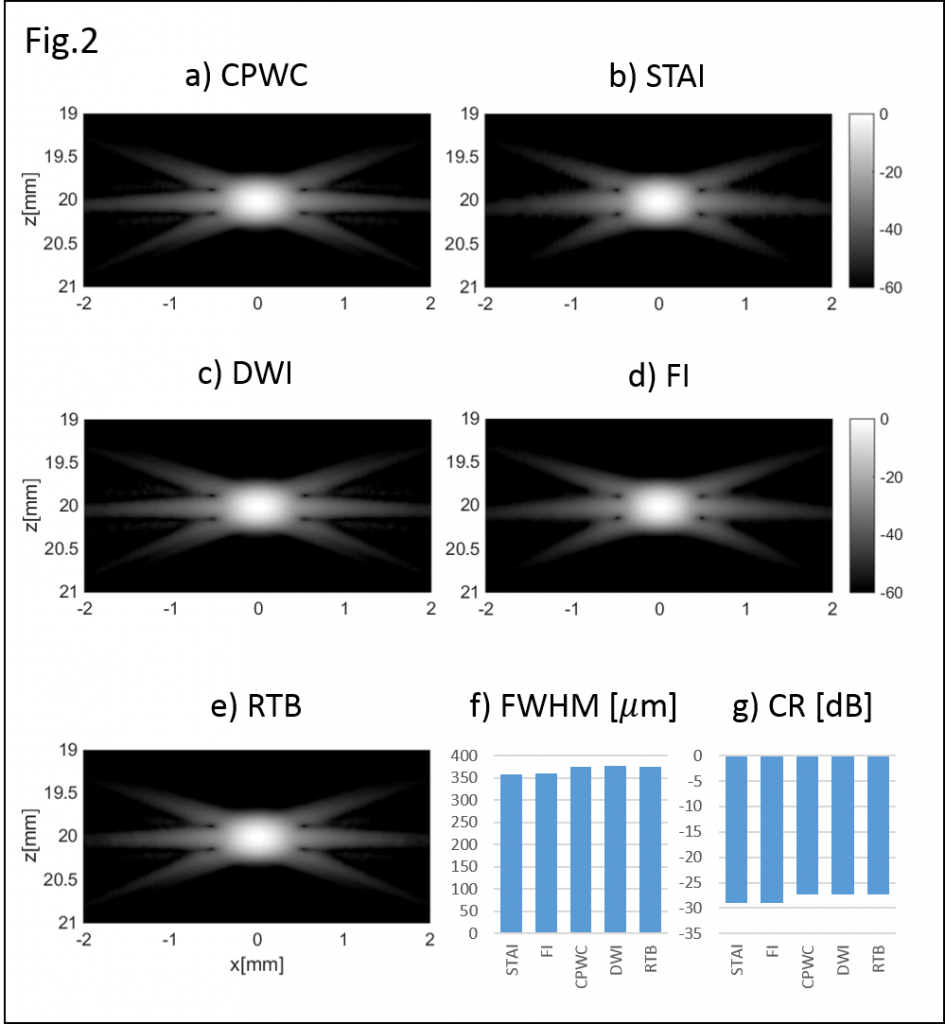The UltraSound ToolBox
Alfonso Rodriguez-Molares 1, Ole Marius Hoel Rindal 2, Olivier Bernard 3, Hervé Liebgott 3, Andreas Austeng 2, Lasse Lovstakken 1
1) Norwegian University of Science and Technology, Norway,
2) University of Oslo, Norway,
3) University of Lyon, France
Background, Motivation and Objective
In the last decade the number of beamforming methods has exploded. Many innovative ideas have been proposed, but we lack the tools to compare the different techniques efficiently. The PICMUS challenge (IUS 2016, Tours) was a pioneering step that made clear that two things are required to establish a fair comparison: a common data format, and a body of methods to process that data.
Statement of Contribution/Methods
Three universities have come together to address this problem by developing both a dedicated file format and a beamforming toolbox.
We present the Ultrasound File Format (UFF): a HDF5 based data format, open to any programming language, for storage of channel and beamformed data; and the UltraSound ToolBox (USTB): a MATLAB toolbox made of both native MATLAB and C++ code, with GPU support.
Together UFF and USTB provide a unified structure to share and process 2D and 3D ultrasound data. Channel data from any origin, e.g. Field II or Verasonics, and using any kind of sequence, e.g. synthetic transmit aperture imaging (STAI) or coherent plane-wave compounding (CPWC), can be stored in UFF and beamformed with USTB.
Both UFF and USTB revolve around the concept of the General Beamformer. The wavefronts in most ultrasound sequences can be fully defined using a single point source P: in focus imaging (FI) and retrospective transmit beamforming (RTB) P is placed at the focal point, in diverging wave imaging (DWI) P is at the origin of the diverging wave, in STAI P lies on the active element, in CPWC P is at infinite in a given direction. Based on that definition we developed a data structure (Fig.1) that makes it possible to beamform all sequences with a single algorithm, or even combine them.

To illustrate this, 5 datasets have been simulated (FI, STAI, CPWC, DWI, and RTB) and reconstructed with USTB’s general beamformer. It is well known that CPWC becomes equivalent to optimal FI (or STAI) under certain circumstances. Here we use USTB to show that the same result can be extrapolated to DWI and RTB. The equivalence is demonstrated in terms of side lobe level (SLL) and full width half maximum (FWHM).
Results/Discussion
Fig.2a-e show the point spread function (PSF) of the tested imaging sequences. The 5 methods have a nearly identical PSF with a FWHM of 369.00 ± 9.42 μm (Fig.2f) and a SLL of -26.00 ± 0.89 dB of (Fig.2g). This validates the general beamformer and supports the equivalence of the 5 methods.

The aim of USTB is to facilitate the comparison between beamforming techniques and encourage the publication of datasets and algorithms. It is free, open source, and open to other contributors. A fully functional toolbox will be released in June 2017, but an alpha version is already available at http://www.ustb.no/, including examples and datasets.
